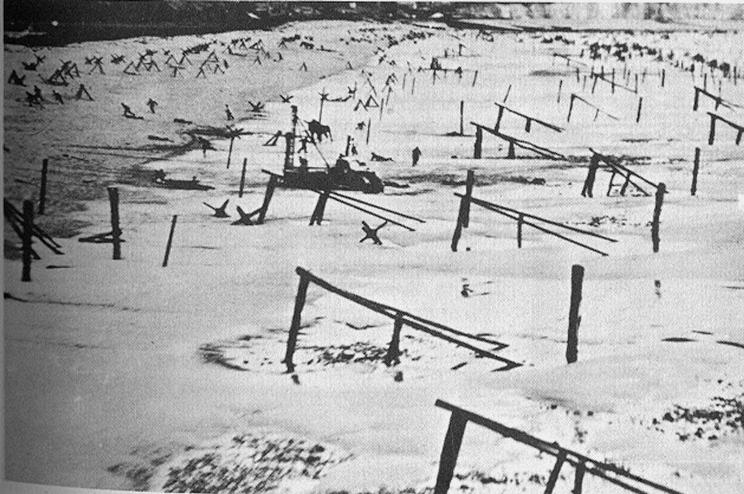Can one man really start an entire world war? It is fair to
argue that Adolf Hitler’s pursuit of land for his ethnically clean Aryan race
caused World War II. There are many more
factors to consider besides the ambitions of Hitler. Would Hitler have been
able to rise to power if Germany was not suffering under the crushing weight of
WWI reparations and the Depression? Hitler may not have been the sole cause of
WWII. And Hitler may have been as successful if conditions in Germany had not
been so dismal. What is certain is that Hitler was a major player in WWII and
will be remembered forever.
Early Life
On April 20, 1889, Klara Polzl bore Alois Hitler his fourth
of sixth children, Adolf; in Branau am Inn, Austria. When Adolf was three, his family moved from
Austria to Germany. Hitler experienced tragedy early in life when his younger
brother Edmund died in 1900. Three years
later, his father died suddenly. While his father, a customs official,
maintained a cold and strict relationship with Hitler, his death undoubtedly
affected the thirteen year old. Hitler found formal education boring. He only
enjoyed his history studies, which focused on instilling a strong sense of
German nationalism in students. Hitler’s caring and loving mother allowed the sixteen-year-old
Hitler to drop out of school to pursue an art career in Vienna. Like his education, Hitler’s art career was
unsuccessful. In 1907, Hitler failed the entrance exam for the Vienna Academy
of Art. Tragedy struck the young man’s life once again, as breast cancer
overcame his dear mother. A few months later, Hitler attempted to reapply for
the Vienna art school but was rejected again. While earning a pittance from
selling postcards and architectural drawings, Hitler lived in homeless shelters
and men’s hostels. While in Vienna, Hitler actively participated in the local political
environment. His struggle in Vienna shaped many of his now memorable political
ideas.

Hitler as a child: top middle
Military Career
Hitler’s military career experienced far greater success
than his educational or art career. In 1913, Hitler left Vienna to avoid
military service under the Hapsburg Empire. While living in Munich, Europe
erupted into World War. Hitler quickly volunteered to serve in a Bavarian
regiment. By December of 1914, Hitler became a decorated soldier, earning the
Iron Cross for bravery. In October 1916, a grenade splinter temporarily wounded
him. In August of 1918, Hitler won the Iron Cross again, but this time with the
first class designation. While recovering from a gas attack that caused him
temporary blindness, Hitler heard the devastating news that Germany had been
defeated.
Rise to Power
Hitler believed that Marxist leaders had betrayed Germany.
The treaty of Versailles called for the demilitarization of Germany and the
reparations assigning blame to Germany. These stipulations enraged Hitler. In
1919, he joined the German’s Workers’ Party (DAP). While with this organization
Hitler became known for his vitriolic speeches, in which he spread his anti
Socialist and anti- Semitic views. Hitler used his leadership position to lead
a failed coup against the German government in November 1923. While serving
time in prison for his crime, Hitler wrote the now famous Mein Kampf. The Great Depression gave Hitler the advantage he
needed to further his political career. In 1932, he lost the race for German
presidency to Paul von Hindenburg. Hindenburg, however, appointed Hitler to
chancellor. Following the death of Hindenburg, Hitler assumed the role of both president
and chancellor. He used his political status to spread his ideas and build up
an army. In August of 1939, Hitler and the German forces invaded Poland and
began World War II.
For More Information:
"Adolf Hitler." The Biography Channel website. http://www.biography.com/people/adolf-hitler-9340144
(accessed February 24, 2014).
“Adolf Hitler.” The History Channel website. http://www.history.com/topics/world-war-ii/adolf-hitler
(accessed on February 22, 2014).
“More Information about Adolf Hitler.” History: BBC.com. http://www.bbc.co.uk/history/people/adolf_hitler#p00bhf0v
(accessed on February 23, 2014).
Noakes, Jeremy. “The Rise of Adolf Hitler. “ History:
BBC.com. Updated on March 30, 2012. http://www.bbc.co.uk/history/worldwars/wwtwo/hitler_01.shtml
(accessed on February 23, 2014).
Rosenburg, Jennifer. “Adolf Hitler.” 20th Century
History: About.com. http://history1900s.about.com/cs/hitleradolf/p/hitler.htm
(accessed February 22, 2014).

